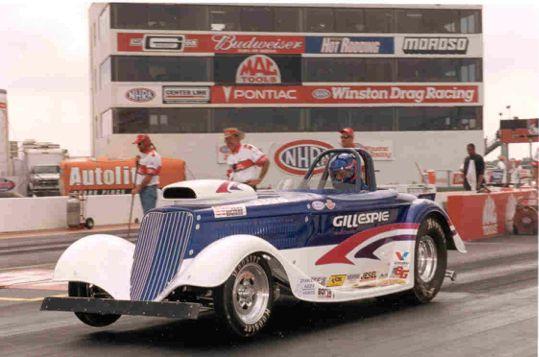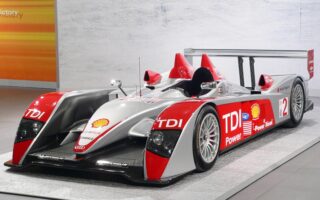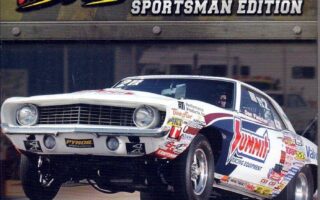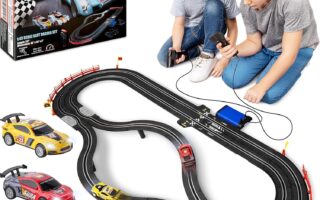Introduction to Bracket Racing: The Art of Precision on the Track
In the world of motorsports, where speed often steals the spotlight, there exists a unique and strategic form of racing that prioritizes precision over pure horsepower: bracket racing. This captivating discipline transforms the racetrack into a chessboard, where drivers are not just competitors but keen strategists, each vying for the ultimate triumph through meticulous planning and execution. Unlike standard drag racing, where the fastest driver claims victory, bracket racing levels the playing field, allowing racers of varying skill levels and vehicle capabilities to compete on equal footing. Here, time is not merely a measure of speed; it’s a benchmark for strategy, as participants race against their own predetermined times, creating a thrilling blend of competition, tactics, and adrenaline. Join us as we delve into the nuances of bracket racing, exploring its rules, the thrill of the chase, and what draws enthusiasts to this high-stakes game of timing and finesse.
Table of Contents
- Understanding the Fundamentals of Bracket Racing
- Strategies to Optimize Your Performance at the Track
- Equipment Essentials for the Beginner Bracket Racer
- Mental Preparation and Focus Techniques for Racing Success
- Q&A
- In Conclusion
Understanding the Fundamentals of Bracket Racing
Bracket racing is a popular motorsport that focuses on competition based on consistent performance rather than outright speed. The concept revolves around establishing a “dial-in” time, which is a predetermined time that a racer believes they can achieve during a race. This time is crucial, as it allows competitors to level the playing field regardless of the horsepower of their vehicles. Racers aim to finish as close to their dial-in as possible without going faster than it, a concept known as “breaking out.” This aspect creates a unique strategy for each race, where drivers must balance speed and consistency, making it not just a test of speed but also of skill and precision.
A key element of this racing format is the elimination rounds, where racers compete head-to-head. These rounds often involve the following elements:
- Reaction Time: The time taken from the green light to launch the vehicle.
- Dial-In Time: The predetermined time set for the racer.
- Breakout Time: Going faster than the dial-in time, resulting in a disqualification.
Tracking these elements helps racers refine their strategies throughout the competition. The ultimate goal is to cross the finish line first while adhering to the rules of bracket racing, highlighting the importance of both mental acuity and technical skill. In essence, it’s a sport that blends science and art, emphasizing the driver’s ability to analyze and adapt while maintaining peak performance.
Strategies to Optimize Your Performance at the Track
To maximize your performance at the track, focusing on both your mental and physical preparation is key. Start by developing a pre-race routine that mentally prepares you for the heat of competition. This could involve visualization techniques, where you imagine yourself executing a flawless run, or practicing deep breathing exercises to maintain focus and reduce anxiety. Additionally, getting familiar with the track conditions and making minor adjustments to your vehicle’s setup based on weather and track conditions can make a significant difference in your performance.
Another vital aspect is strategic planning before each race. Analyzing your competitors’ strengths and weaknesses can provide a competitive edge. Consider keeping a checklist for each race to ensure you’re not overlooking any crucial elements. Here’s a simple table to help organize your strategy:
| Strategy | Description |
|---|---|
| Vehicle Maintenance | Ensure all systems are checked and ready. |
| Practice Runs | Get used to the track layout and adapt to different conditions. |
| Analyze Competitors | Know their strengths to adjust your approach accordingly. |
| Mindset Preparation | Use visualization to see success before it happens. |
Equipment Essentials for the Beginner Bracket Racer
In bracket racing, your success on the track heavily relies on the right equipment. For beginners, it’s essential to start with the fundamentals that will give you a competitive edge without overwhelming you. Here are some must-have items to consider for your initial setup:
- Race Car: Choose a vehicle that is reliable and suits your racing style. Ensure it’s within your budget and offers potential for modifications.
- Safety Gear: Invest in a quality helmet, fire suit, gloves, and shoes to keep you safe. It’s critical to have equipment that meets track standards.
- Timer and Data Logger: A reliable timer is crucial for understanding your performance. Data loggers can help track your vehicle’s metrics for better adjustments.
- Tire Pressure Gauge: Proper tire pressure is vital for optimal traction and handling. A good gauge ensures you maintain ideal settings.
- Tool Kit: Pack essential tools for on-the-spot repairs or adjustments. This will minimize downtime and keep you racing.
With the right equipment in place, you are setting up for a successful entry into the world of bracket racing. As you gain experience, consider monitoring your competitors and investing in additional tools and tech that could enhance your performance. Below is a simple checklist to help you assess your readiness:
| Essential Item | Status |
|---|---|
| Race Car | ✅ Ready |
| Safety Gear | ✅ Ready |
| Timer/Data Logger | ✅ Ready |
| Tire Pressure Gauge | ✅ Ready |
| Tool Kit | ✅ Ready |
Mental Preparation and Focus Techniques for Racing Success
Achieving peak performance in bracket racing is as much a mental game as it is about speed and precision. To cultivate a winning mindset, racers should engage in visualization techniques that immerse them in the experience of a perfect run. This involves closing your eyes and vividly imagining every detail—from the texture of the steering wheel to the smell of burnt rubber—until you can almost feel the adrenaline pumping through your veins. Additionally, practicing mindfulness can help you stay grounded during the race. Techniques such as deep breathing can alleviate pre-race jitters and enhance focus, allowing you to channel your energy into a more productive mental space.
Moreover, setting specific, measurable goals for each race can greatly enhance your mental clarity and motivation. Consider utilizing a performance table to track your progress over time, which not only highlights your achievements but also helps identify areas for improvement. This proactive approach fosters a growth mindset and encourages continual learning. Here’s an example of how you might structure your weekly goals:
| Week | Goal | Focus Technique |
|---|---|---|
| 1 | Improve reaction time by 0.1 seconds | Daily visualization |
| 2 | Practice consistent staging | Breathing exercises |
| 3 | Race in three different conditions | Mindfulness during practice runs |
Q&A
Q&A on Bracket Racing: The Art of the Race Against Yourself
Q1: What is bracket racing?
A: Bracket racing is a unique style of drag racing where competitors aim to achieve a time as close as possible to a predetermined “dial-in” time. Unlike traditional drag racing where the fastest driver wins, in bracket racing, the focus is on consistency and precision. Each racer selects a target time based on their vehicle’s capabilities and their racing experience, and the goal is to reach that time without going quicker than it.
Q2: How does one participate in a bracket race?
A: To participate in a bracket race, a driver needs a suitable vehicle, a valid driver’s license, and registration at the event. Participants must “dial-in” their time before the race starts. Post-dialing, drivers line up at the start, where the tree - a signal device – counts down to launch them down the track. The race is won by the driver who crosses the finish line closest to their dial-in time without exceeding it.
Q3: What are some common strategies for success in bracket racing?
A: Success in bracket racing hinges on consistency, strategy, and nerves of steel. Key strategies include:
- Dial-In Selection: Choose a realistic dial-in time based on your vehicle’s performance rather than pushing for the quickest possible time.
- Starting Line Reaction: Practice your reaction time to the tree light. A quicker reaction can help you gain an advantage.
- Rounding: Focus on “playing the odds” by considering your opponent’s potential performance, which includes estimating their dial-in time.
- Vehicle Tuning: Ensure your vehicle is finely tuned for optimal performance to minimize variances in speed.
Q4: Why is bracket racing appealing to both novice and seasoned racers?
A: Bracket racing is appealing as it levels the playing field, allowing drivers of varying skill levels and vehicle setups to compete. Newcomers can gain experience and confidence without the pressure of competing at the edge of speed. Meanwhile, seasoned racers enjoy the challenge of pushing the limits of consistency and strategy, transforming racing into a cerebral sport where mental acuity matches horsepower.
Q5: What should one expect at a bracket racing event?
A: At a bracket racing event, expect a vibrant atmosphere filled with different vehicles, from street cars to purpose-built drag machines. Practice sessions precede the official races, allowing drivers to dial in their times. You’ll find a sense of community among racers, camaraderie in the pits, and lots of cheering from fans. Spectators can relish the action as vehicles launch off the line, make sizzling passes down the quarter-mile, and celebrate the skill it takes to win.
Q6: Are there any common misconceptions about bracket racing?
A: Yes, several misconceptions swirl around bracket racing. One is that it lacks the excitement of heads-up racing; however, the thrill often resides in the strategy and tension of trying to outsmart your opponent and hit your dial-in time perfectly. Another misconception is that you need a high-performance vehicle to be successful. In reality, many average street cars compete effectively with the right preparation and driver skill, proving that racing is as much about the driver as it is about the machine.
Q7: How can someone get started with bracket racing?
A:** To get started with bracket racing, find a local raceway that hosts bracket events and check their schedule. Engage with the racing community, seek guidance from seasoned racers, and participate in novice programs if available. Build your vehicle based on regulations and start practicing your launch and timing. Most importantly, embrace the learning curve, and have fun as you discover the captivating world of bracket racing!
In Conclusion
As we shift gears and approach the finish line of our exploration into the world of bracket racing, it becomes clear that this motorsport is more than just a competition. It embodies a unique blend of strategy, precision, and community, drawing enthusiasts from all walks of life. Whether you’re a seasoned racer or a curious newcomer, the thrill of the race and the camaraderie among competitors create an environment that is engaging and electrifying. Bracket racing offers a unique opportunity to hone your driving skills while navigating the intricacies of timing and strategy, making each run a test not only of speed but also of mental acuity. So, whether you’re considering your first run or you’re already a fixture in the lanes, remember that every race is a chance to learn, connect, and revel in the exhilarating world of bracket racing. The lights have dimmed, the engines quieted, but the spirit of competition and community lives on, waiting for the next round to begin.



